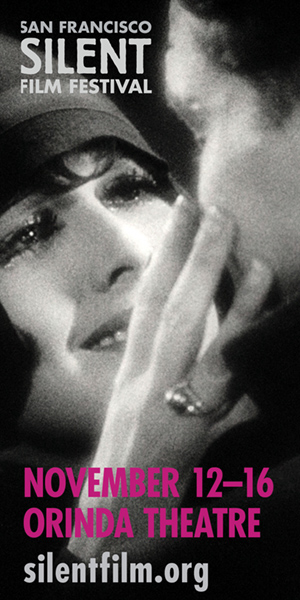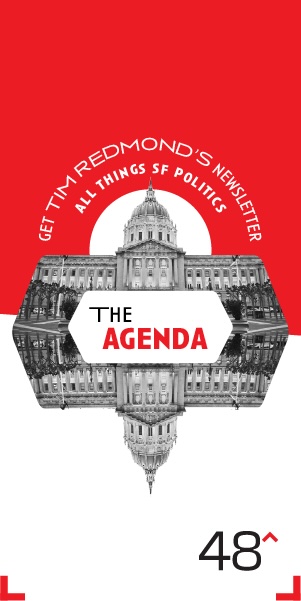If there are things I’ve come to hate nearly five years into an ongoing pandemic (aside from the 30-plus-million deaths, thousands of Long COVID diagnoses, and just plain immoral mask bans), one would be how I’ve started to miss the initial 2020 lockdowns. As isolating as they were in a literal sense, modern technology made it less so in a greater sense. We were instantly able to check in on loved ones and acquaintances as we tried to wait out the social distancing that was only supposed to take about two weeks.
Another thing that infuriates me is the blatant erasure of COVID from the majority of art and media. I’ve written about this before (as has Violet Blue), but it’s inexcusable that a generation-defining, once-in-a-century plague has such a dearth of artistic representation. As people fumble over themselves to figure out how to deal with “the next pandemic” (with many pointing at avian flu), it’s too bad that artists, journalists, medical pros, and business-owners have stopped paying attention to the one still going on. Especially since we know that the same life-saving mitigations of the last 4 ½ years (particularly masks) successfully apply to many other illnesses.
That’s why it was such a relief to hear about an art show based entirely around what happened in 2020 – not just with the pandemic, but also in the world of social justice and political protest. The show in question is Makeshift Memorials, Small Revolutions (through February 2025 at KADIST, SF), a collaboration with the Blaffer Art Museum at the University of Houston, Texas. The show—which will comprise performances and programs through February—isn’t limited exclusively to works from 2020 and after, but the majority are. The overall theme is memory and connectivity, both of which went topsy-turvy starting four years ago.
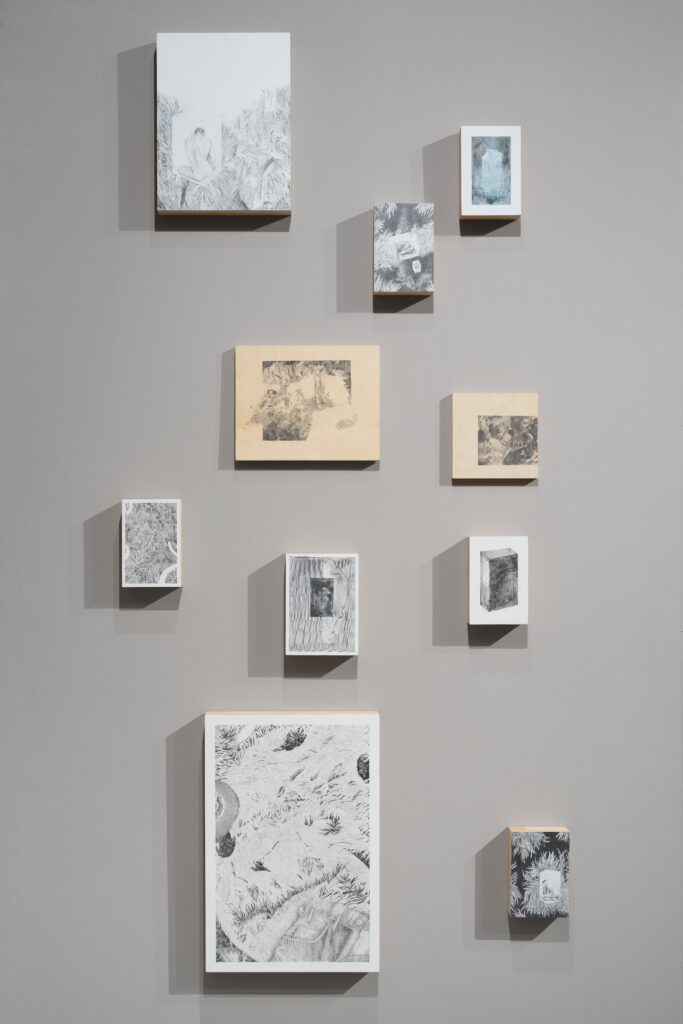
One of the more “serene” pieces on display which reflects the pandemic’s personal fluctuations is Moses Tan’s borrowed intimacies series (2020), a collection of pencil sketches on wooden blocks. The block shape appears in the lovingly detailed sketches themselves, often with a nude masculine form trying to contort itself within its confines. I’m told that the series was part of Tan’s coming out to his family in 2020. Because when public safety asks you go in one box, you’ll soon find the other boxes constricting.
The direct effect of lockdowns can also be seen in Carmen Winant’s Why are these our only alternatives and what kind of struggle will move us beyond them? (2020). That mouthful of a title refers to a very large college of photocopied ‘60s and ‘70s civil rights posters advocating rights for primarily Latina domestic caregivers. Winant had been collected them for a piece to be shown in Mexico City before the pandemic turned her into a full-time remote employee and, yes, caregiver for her own children. As kids are wont to do, one began drawing on and adding stickers to the photocopies when Winant turned her back. Rather than thinking the work ruined, she was now inspired to reprint the posters with her children’s art superimposed over them, drawing a direct connection between the message of the original posters and the young charges for whom domestic workers are meant to care.
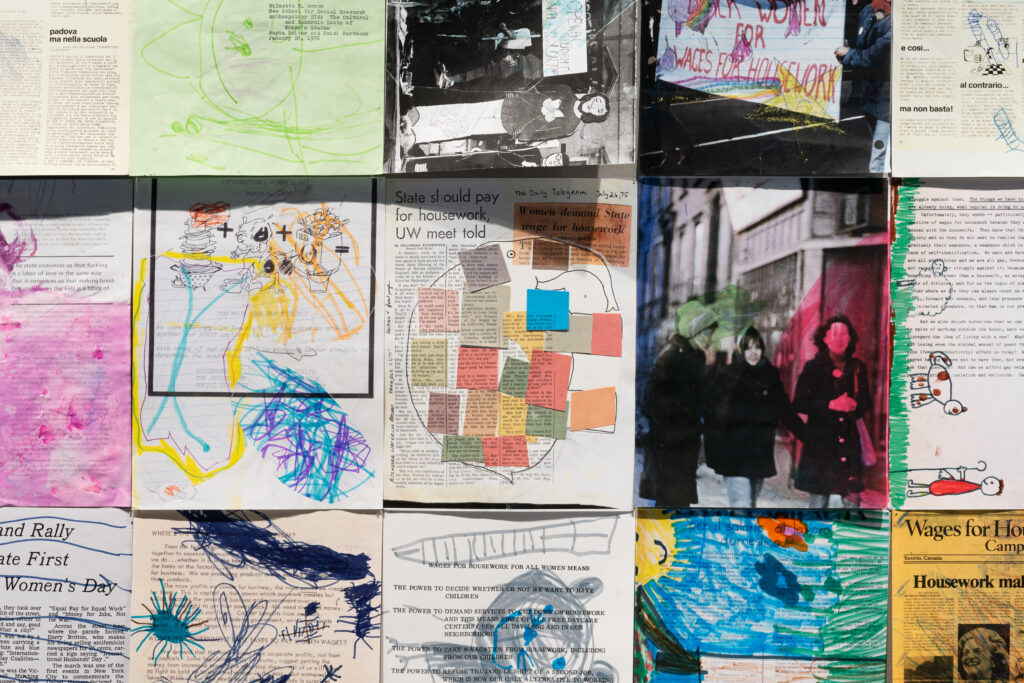
One piece predates the madness of 2020, but nevertheless feels inextricably tied to it: Joe Namy’s Half Blue (2019), a multimedia piece of audio, video, projected text, and flashing police lights (photosensitive and epileptic visitors should be cautious before this piece enters its 10-minute cycle) about the artist’s direct connection to the 2018 hate-crime killing of Khalid Jabara, his cousin. The murder—committed by white neighbors who had been stalking Jabara—led to the Jabara-Hayer NO HATE Act of 2021. It’s emphasized that Jabara had done everything to conform and “Americanize” himself for the sake of avoiding the very tragedy that befell him. Assimilation will not save you.
Other powerful pieces include Moyra Davey’s Visitor (2022), showing photocopies of photos and journal entries by the Canadian-born artist following her son’s car accident. They try their best to traverse the Möbius strip that is US healthcare, only to seemingly make no progress in the young man’s recovery. At one point her journal documents his fentanyl prescription, which is apparently meant to be taken once every hour.
And so on the show goes, featuring memorials to those passed on (Every Ocean Hughes’ One Big Bag [2021] features a one-person performance of death doula ponderances) and the small-if-vital changes that make all the difference (like Jim Denomie’s oil on canvas tribute to Indigenous resistance, Standing Rock, 28 Degree [2021]). Yet, of all the focus on 2020 and afterward, one seismic shift is noticeably absent: COVID. Yes, the aforementioned pieces mention the lockdowns, but the coronavirus hardly gets a direct call-out in the exhibit. Maybe the pieces showing concurrently in Texas focus on the pandemic more directly, but its general absence-through-silence here is akin to ignoring the elephant in the room.
Help us save local journalism!
Every tax-deductible donation helps us grow to cover the issues that mean the most to our community. Become a 48 Hills Hero and support the only daily progressive news source in the Bay Area.
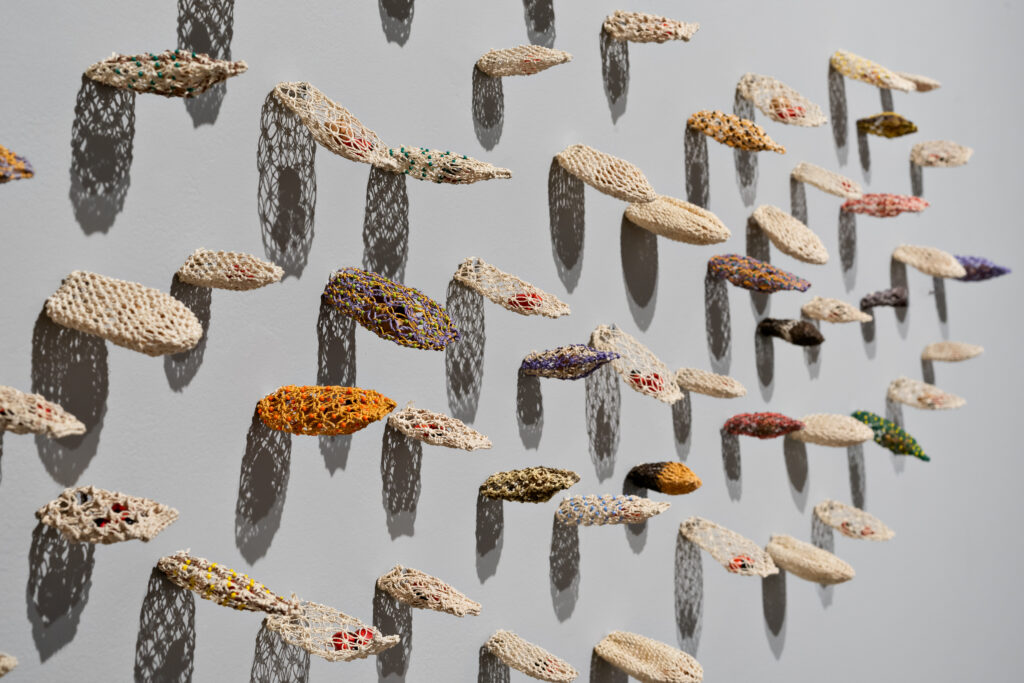
As this was a preview I was attending alone, I only took out my Aranet4 once to check CO² levels in the small gallery. It read 798ppm for me and the three KADIST hosts escorting me through the gallery—all of whom, I’m glad to say, wore KN95 masks the entire time I was there. Before leaving, I asked if there would be any special COVID safety measures, especially given the time and theme of the exhibit. I was told the now-well-versed lines that masks would be “encouraged, but not required” and that they gallery is “following federal guidelines”.
The mere existence of this show proves just how necessary it is to create COVID-era art just as much as it was to create for HIV/AIDS, 9/11, and the current War on Gaza, to name but a few. It’s all the more important because the COVID era has, most certainly, not ended. It’s lack of explicit representation doesn’t dimmish the power of any of the pieces in the show, but it’s still a rather conspicuous absence.
MAKESHIFT MEMORIALS, SMALL REVOLUTIONS runs through February 2025 at KADIST, SF. Viewing hours and further info here.




